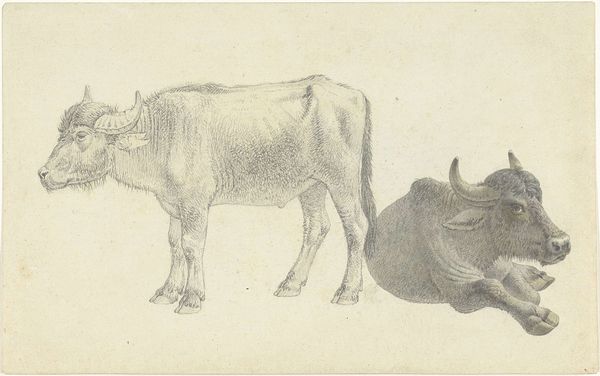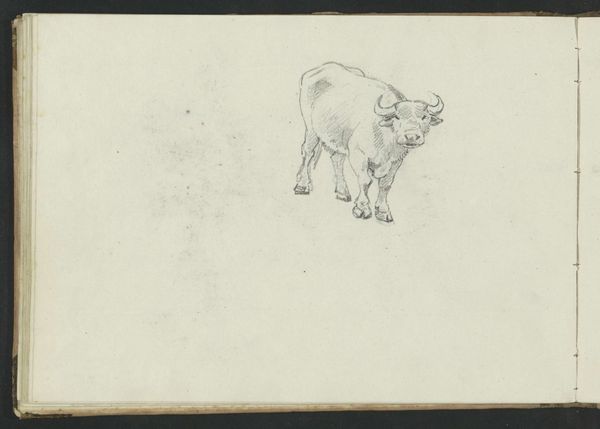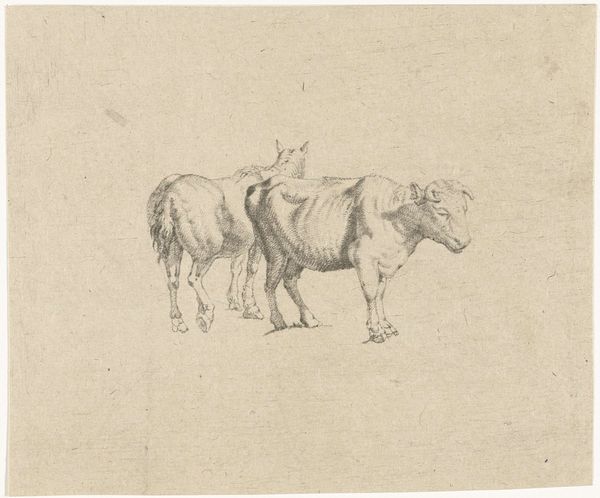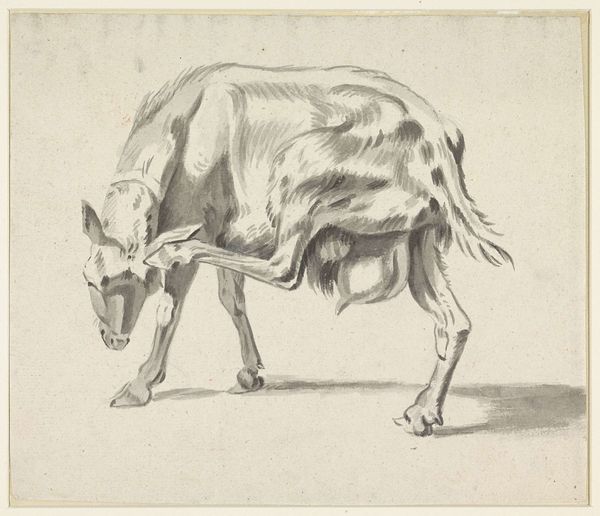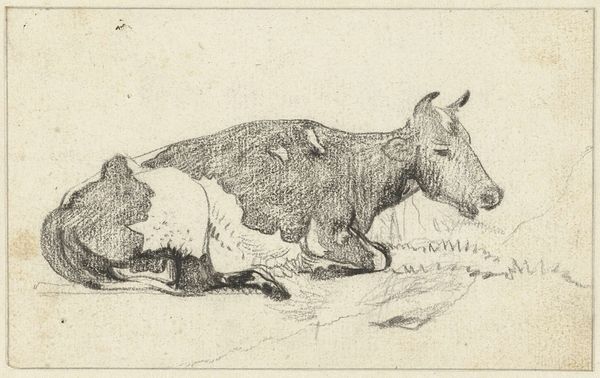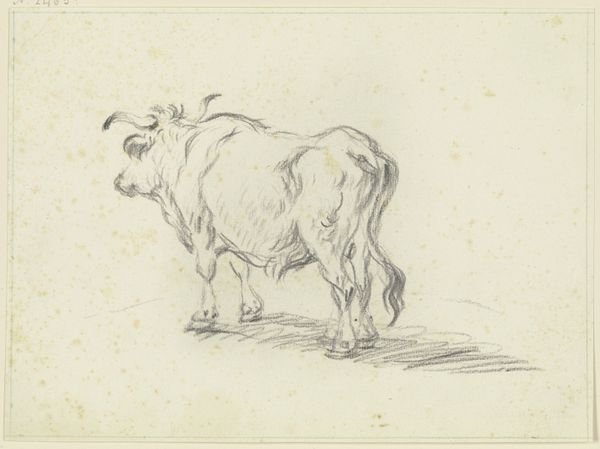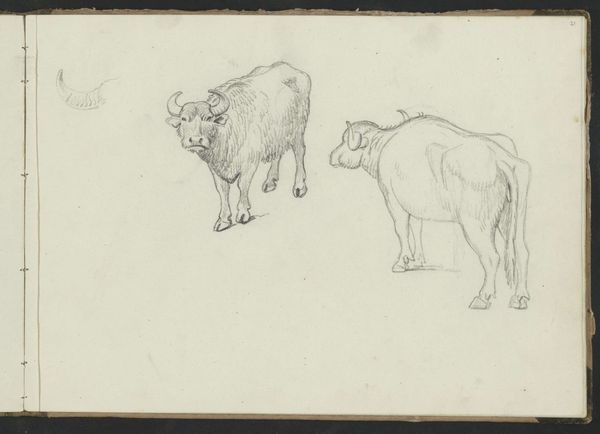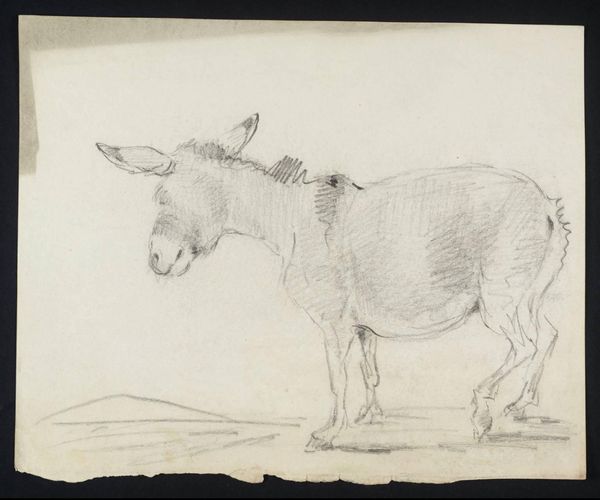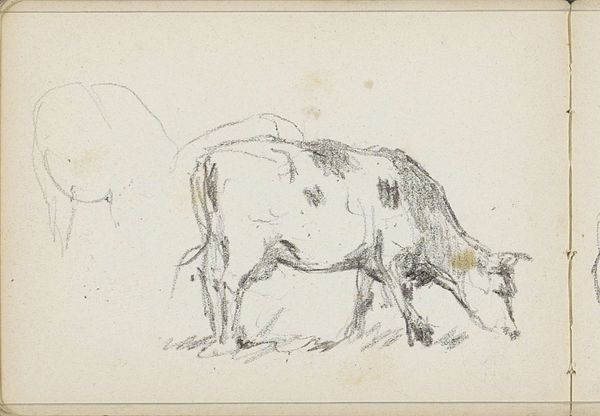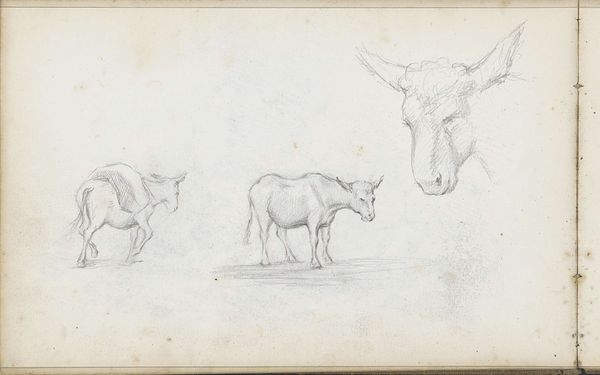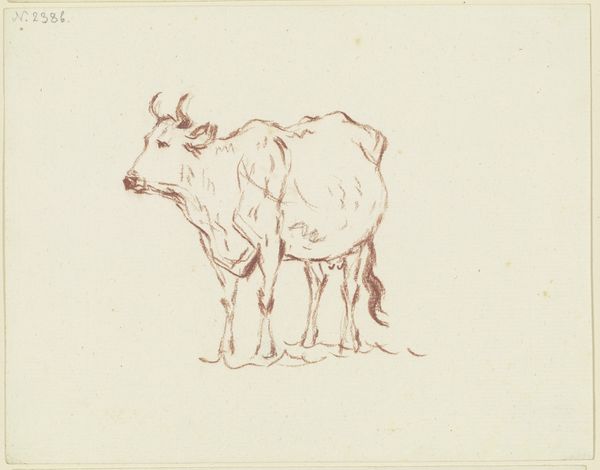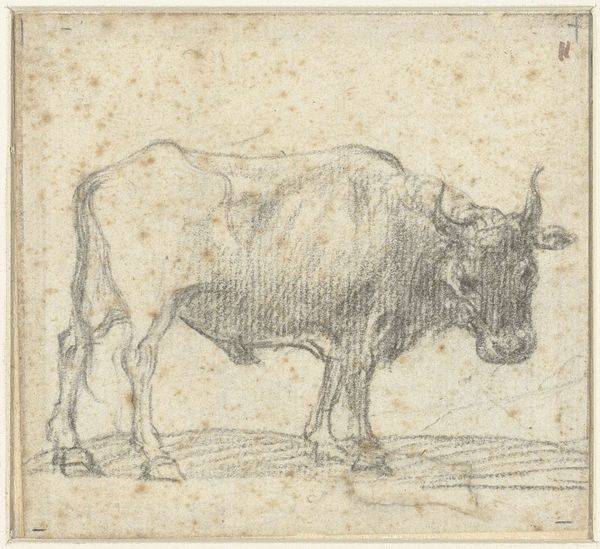
drawing, pencil
#
drawing
#
quirky sketch
#
pen sketch
#
hand drawn type
#
landscape
#
personal sketchbook
#
sketchwork
#
ink drawing experimentation
#
folk-art
#
pen-ink sketch
#
pencil
#
pen work
#
sketchbook drawing
#
genre-painting
#
sketchbook art
#
realism
Copyright: Rijks Museum: Open Domain
Curator: Willem Cornelis Rip’s drawing, titled "Ossenkar," likely made between 1866 and 1922, showcases an ox-cart rendered in pencil and ink. It has this immediate, unpretentious feel about it, doesn’t it? Editor: Absolutely. The composition, split across the sketchbook's open pages, strikes me as deliberate. The stark negative space on the left emphasizes the tangible weight and sketched energy on the right, almost forcing a visual balance through contrast. Curator: Exactly. The weight…I almost feel the weight of that ox. I wonder what Rip was thinking when he captured this scene. Perhaps a glimpse into the everyday life of farmers or rural workers, the unsung heroes behind the Dutch landscape paintings we admire. I imagine he stumbled upon it, pulled out his sketchbook, and scribbled a quick ode to a beast of burden and the land itself. Editor: There’s also the element of raw technique on display. Look at the cross-hatching that suggests musculature and the way the cart's structure is merely implied with swift lines. He clearly prioritized capturing the essence of form over photographic precision. The use of the pencil medium accentuates this idea, imparting a quality to it. Curator: A quality, yes! It’s interesting how such simplicity can trigger so many questions about how it was made, and what this particular subject meant to the artist at the time, in relation to himself and to others. Editor: This, indeed, highlights how artistic impact does not depend on elaborate execution or bombastic aesthetics. Rip masterfully directs our gaze using contrast and line. The semiotic power of line work—the swiftness, the weight—speaks volumes. It is deceptively complex, hinting at social contexts and artistic strategies within a simple landscape drawing. Curator: The simplicity gets to you after a while, makes you reflect. I can imagine Rip walking along with his sketchbook, finding inspiration in unexpected places… And the "Ossenkar" ends up telling a rich and simple story. Editor: Agreed. It offers a great object lesson of artistic intentionality and structural efficiency for us all.
Comments
No comments
Be the first to comment and join the conversation on the ultimate creative platform.
